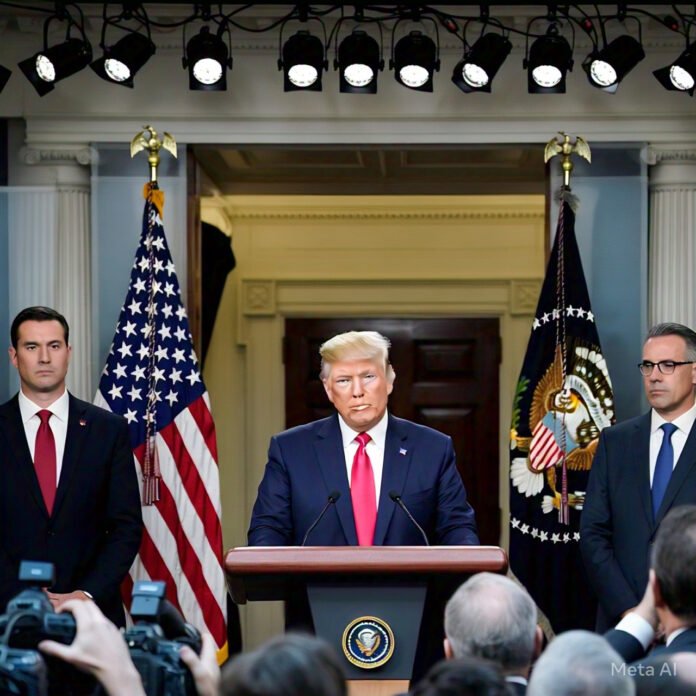1. Historical Context: How We Got Here
The Trade War Timeline
- 2018-2020 (First Trump Term): Initial 25% tariffs on $250B in Chinese goods, targeting steel, aluminum, and technology. China retaliated with tariffs on U.S. agricultural exports.
- Phase One Deal (2020): Temporary truce where China pledged to buy $200B more in U.S. goods—a promise it only partially fulfilled.
- Biden’s Continuation (2021-2024): Kept most tariffs while adding targeted restrictions on semiconductors and green tech.
Why Trump is Doubling Down Now
- Political Strategy: Hardline stance appeals to manufacturing workers in swing states (PA, MI, WI).
- Economic Reality: U.S. trade deficit with China hit $382B in 2023—higher than pre-trade war levels.
- Technological Arms Race: China’s lead in EVs, batteries, and 5G is seen as an existential threat.
2. Sector-by-Sector Breakdown: Who Wins and Loses
Automotive Industry
- U.S. Automakers: Short-term pain (higher part costs) but long-term gain (protection from cheap Chinese EVs).
- Chinese EV Makers (BYD, NIO): Effectively locked out of U.S. market; may pivot to Europe/Latin America.
- European Carmakers: Could benefit if U.S. buyers shift from Chinese to German EVs.
Semiconductors & Tech
- U.S. Chipmakers (Intel, NVIDIA): Mixed impact—higher costs but less competition.
- Apple: Worst-hit U.S. company (20% of revenue from China, iPhones could get 30% more expensive).
- TSMC & Samsung: May gain as U.S. pushes “friendshoring” to Taiwan/Korea.
Energy & Industrial
- Solar Panels: U.S. installers face project delays as China supplies 50% of global solar modules.
- Batteries: CATL (China’s battery giant) may cancel planned U.S. factories.
- Steel: U.S. producers (Nucor) cheer, but automakers and builders face 15-20% price hikes.
3. China’s Counterplay: Beyond Tariffs
Economic Warfare Tactics
- Rare Earth Embargo: China controls 80% of global rare earth supply (critical for missiles, EVs, and tech).
- Dollar Dumping: Offloading U.S. Treasuries could spike bond yields, hurting mortgages and loans.
- Export Bans: Restricting graphite (key for batteries) and gallium (for chips) could paralyze U.S. tech.
The “Silent Blockade” Strategy
- Pressuring U.S. Firms in China: Suddenly auditing Apple, Tesla, and Microsoft for “regulatory compliance.”
- Encouraging Consumer Boycotts: As seen in 2019 with the NBA and 2021 with H&M.
4. Global Domino Effect
Countries Caught in the Crossfire
- Germany: BMW and Volkswagen rely on Chinese sales; could face retaliation.
- Vietnam/India: May gain manufacturing as companies flee China, but lack infrastructure.
- Australia: Iron ore exports to China at risk if trade war spills into commodities.
Supply Chain Chaos
- Shipping Costs: Could spike 300% as routes reconfigure (like during COVID).
- Inventory Crisis: Retailers like Walmart and Amazon may face holiday season shortages.
5. Long-Term Scenarios: 2025 and Beyond
Best Case: Forced Negotiation
- China blinks first due to economic slowdown (5% GDP growth in 2024, youth unemployment at 21%).
- New Trade Deal with stricter IP rules but lower tariffs.
Worst Case: Full Decoupling
- Two Separate Tech Ecosystems: U.S. (Google, Apple, NVIDIA) vs. China (Huawei, ByteDance, SMIC).
- Cold War 2.0: U.S. bans all Chinese tech imports; China seizes U.S. factories in retaliation.
Most Likely: Managed Conflict
- Continued skirmishes (tariffs on new sectors like biotech).
- No full separation due to mutual dependence (China needs U.S. chips; U.S. needs Chinese manufacturing).
6. What It Means for You
Consumers
- Higher Prices: Expect 10-15% increases on electronics, cars, and appliances by 2025.
- Product Shortages: Some gadgets (like AirPods) may see delayed releases.
Investors
- Buy: Defense stocks (Lockheed), rare earth miners (MP Materials), and U.S. steelmakers.
- Sell: Companies with heavy China exposure (Apple, Tesla, Starbucks).
Workers
- Manufacturing Gains: 500K new U.S. factory jobs possible by 2026.
- Tech Layoffs: If China retaliates against Big Tech, job cuts could follow.
Conclusion: The New Economic World Order
Trump’s 125% tariffs aren’t just a policy shift—they’re a declaration of economic war. The coming years will test whether the U.S. and China can coexist as rivals or if the global economy splits into competing blocs.
One thing is certain: The 2020s will be defined by this showdown, with repercussions far beyond trade—reshaping geopolitics, tech innovation, and everyday life.
Deeper Dive Resources
- China’s Rare Earth Dominance (CSIS Report)
- EV Battery Supply Chain Risks (BloombergNEF)
- Historical Precedents: Smoot-Hawley Tariffs (Economic Policy Institute)


